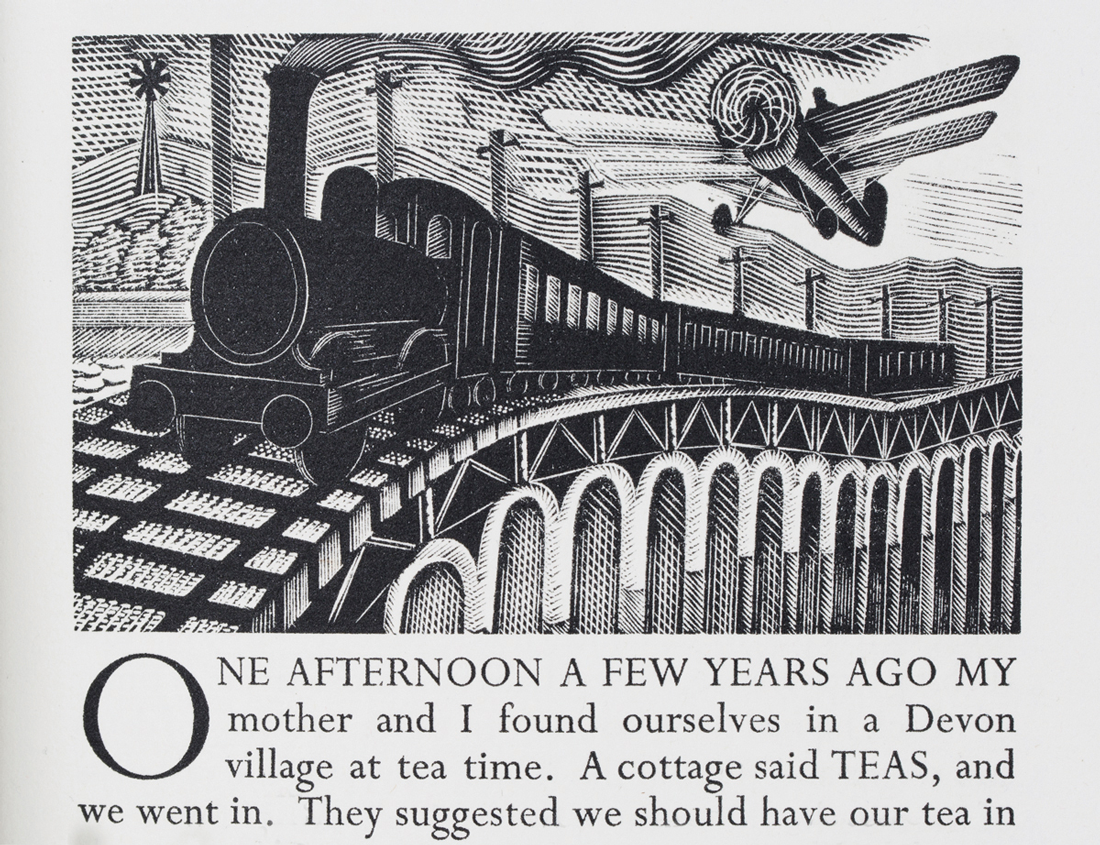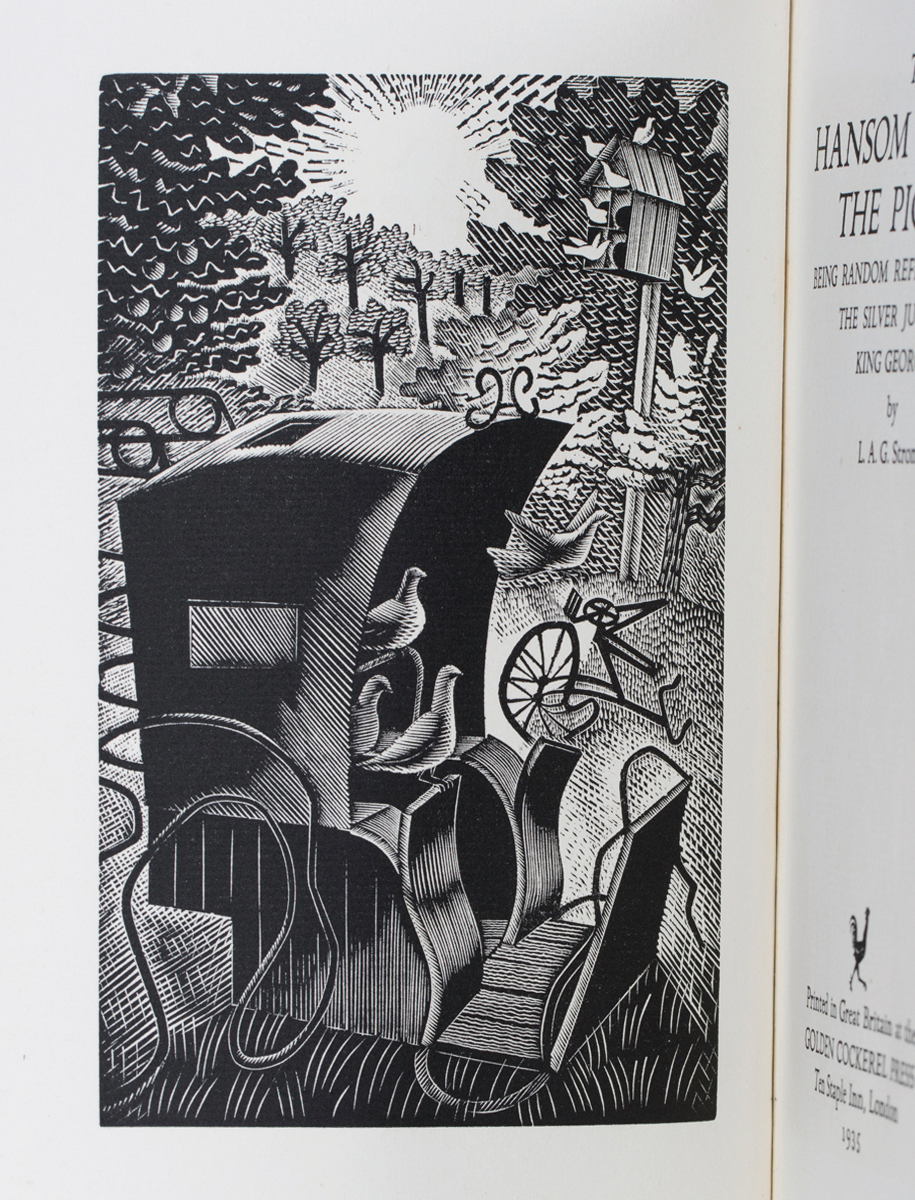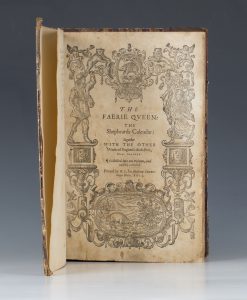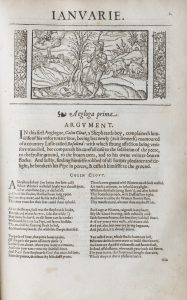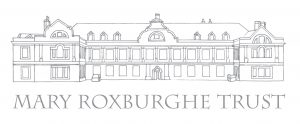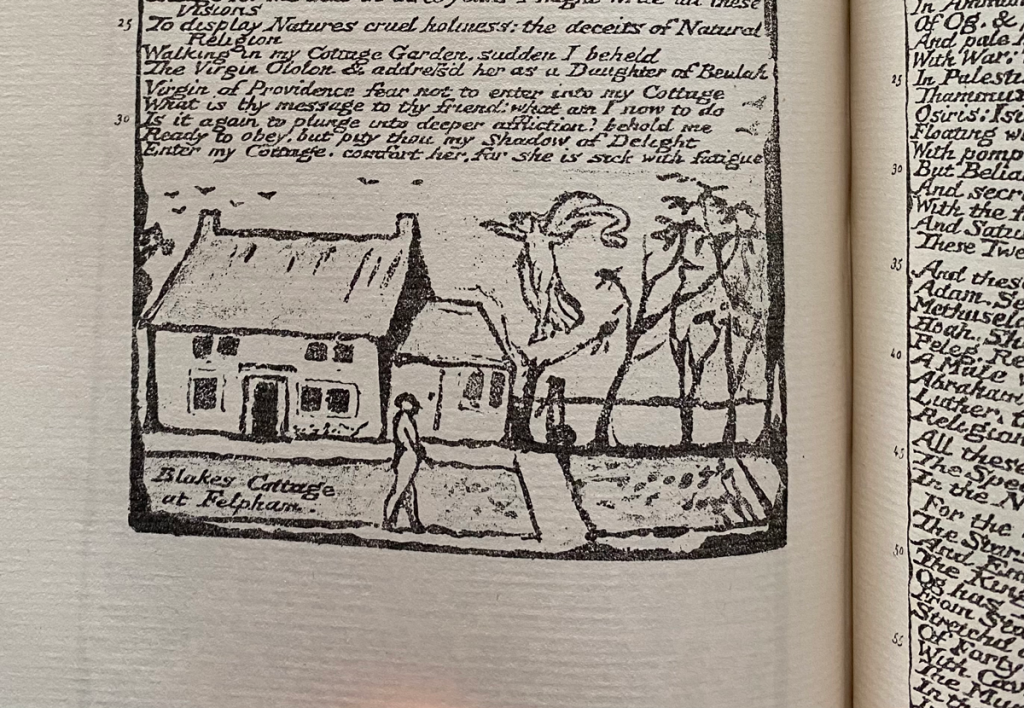
The central threads of William Blake’s art and writing are beautifully woven together with the formative time that this revolutionary artist spent in Sussex.
William Blake spent most of his life in London. However, for a number of years he lived in Sussex. In 1800 he moved to a cottage in Felpham, West Sussex, to illustrate work by the poet William Hayley. During this period William Blake wrote the poem titled ‘And Did Those Feet in Ancient Time’. It formed part of the preface to his epic work ‘Milton a Poet’ which he worked on until 1808. The poem builds on that wonderful passage from the Bible in chapter 21 of the Book of Revelation where Creation is perfected and renewed as heaven and earth are united.
Blake wrote to Thomas Butts shortly after his arrival in Sussex: ‘the sweet air and the voices of the winds, trees and birds and the odours of our happy ground makes [Felpham] a dwelling for immortals.’ Blake’s language articulates an earthly paradise contrasting with his lifelong experience of the environs of London.
‘Milton a Poet’ has an image titled ‘Blake’s Cottage at Felpham’. The lithographed facsimile illustration you see here is from The Works of William Blake, Poetic, Symbolic, and Critical which was published by Bernard Quaritch in London in 1893. It depicts Blake visited by the figure of ‘Inspiration’ in the garden of his cottage. The narrative forms part of a very personal mythology of his own creation. Felpham continued to inform the pastoral qualities of his Arcadian figures depicted under a ‘tranquil moon’ and ‘setting sun’ in his later work.
 The Works of William Blake, Poetic, Symbolic, and Critical provided an important interpretation of Blake’s esoteric system and was edited by Edwin John Ellis and William Butler Yeats. This example realised £950 at Toovey’s.
The Works of William Blake, Poetic, Symbolic, and Critical provided an important interpretation of Blake’s esoteric system and was edited by Edwin John Ellis and William Butler Yeats. This example realised £950 at Toovey’s.
The importance of Blake’s work was not wholly understood during his own life-time though it inspired a new, younger generation of visionary artists which included Samuel Palmer, George Richmond and Edward Calvert, who called themselves ‘the Ancients’.
A little over 100 years later in response to the huge casualties of the Battle of the Somme and declining morale Robert Bridges, the Poet Laureate, edited a patriotic anthology of poems titled ‘The Spirit of Man’. Amongst these was the then little known poem by William Blake titled ‘And Did Those Feet in Ancient Time’ better known to us today as ‘Jerusalem’.
In 1916 Bridges invited Hubert Parry, who was living at Rustington, to set William Blake’s poem ‘Jerusalem’ to music and the hymn became a national anthem. Jerusalem’s success inculcated redemption, renewal and hope into our national psyche.
So Jerusalem is a hymn inspired and born out of the beautiful county of Sussex and perhaps the new Jerusalem, ‘England’s mountains green’ and ‘pleasant pastures seen’ are to be found in the folds of the ancient Sussex Downs and the Sussex Weald.

